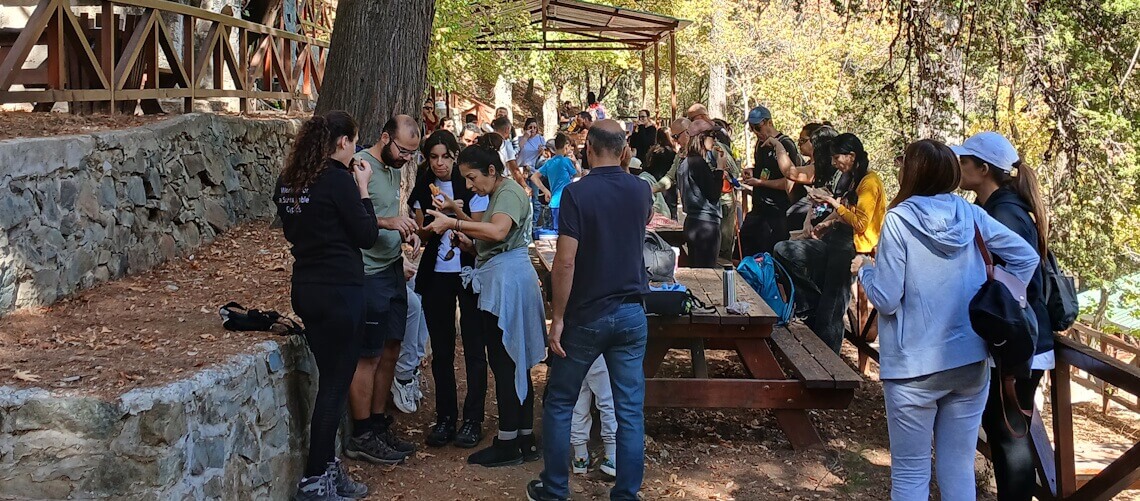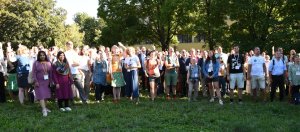On Sunday, October 26th, 2025, the Pandoteira project celebrated World Reptile Day with an outdoor experience at the Machairas forest. Members of our team, from Terra Cypria and the Open University of Cyprus, along with the Cyprus Herpetological Society, organised games for our young friends and interactive activities for all participants. The aim was to inform the general public about the reptiles found in Cyprus and their importance for local biodiversity.

Starting from the Kionia picnic area, we visited three stations.
- First, we learned how to identify the reptiles of Cyprus, by observing preserved specimens in alcohol of the different species that live on our island. We also discussed basic differences that allow us to identify them easily.
- Then we learned how to safely and respectfully locate reptiles in nature. How experts catch and handle them, either for research purposes or for removing from residential areas, and how they are released safely back into their natural environment. We learned and tried to apply the “rock flipping” method, where one can carefully find reptiles under rocks, as they often use them as shelter. We also saw how experts “fish” reptiles without harming them, by tying a loop of dental floss onto a long rod. Although we tried to catch lizards using this method … it’s harder than it sounds.
- At the third station, we learned how to deal with emergencies and injuries in nature. It’s crucial to know how to protect both ourselves and the environment and be well prepared for future outdoor activities.

Afterwards, we walked a part of the Kionia – Prophet Elias trail, where we enjoyed the spectacular view and were informed about the biodiversity of the area. For those who did not want to join the hike, our team had prepared reptile-themed crafts. Children and adults made magnets, figures, and collages in the shape of lizards, snakes, and chameleons.

The Pandoteira project deals with the management of the Natura 2000 network in Cyprus, with the purpose of making the network more effective and functional, as well as sustainable. The project is co-funded by the EU’s LIFE Programme, it is coordinated by the Department of Environment and has 13 other associated beneficiaries from Public Bodies, Universities, NGOs and private companies. Find out more about the project’s Partners here.
To learn more about the Pandoteira project follow this link.






